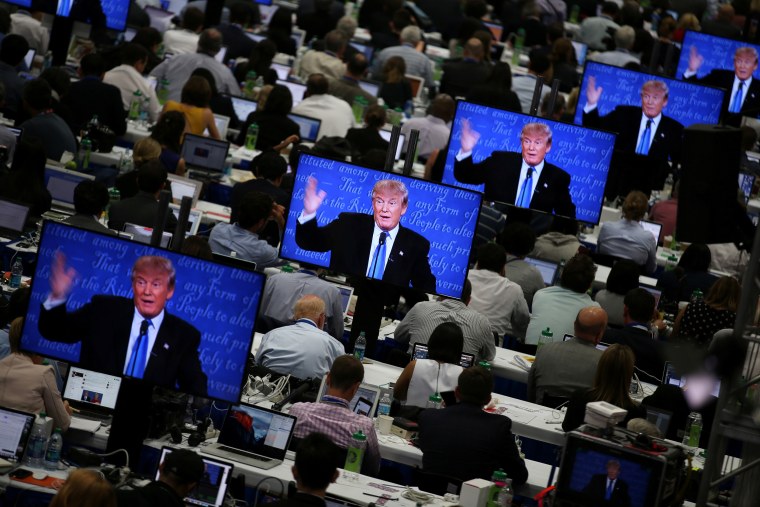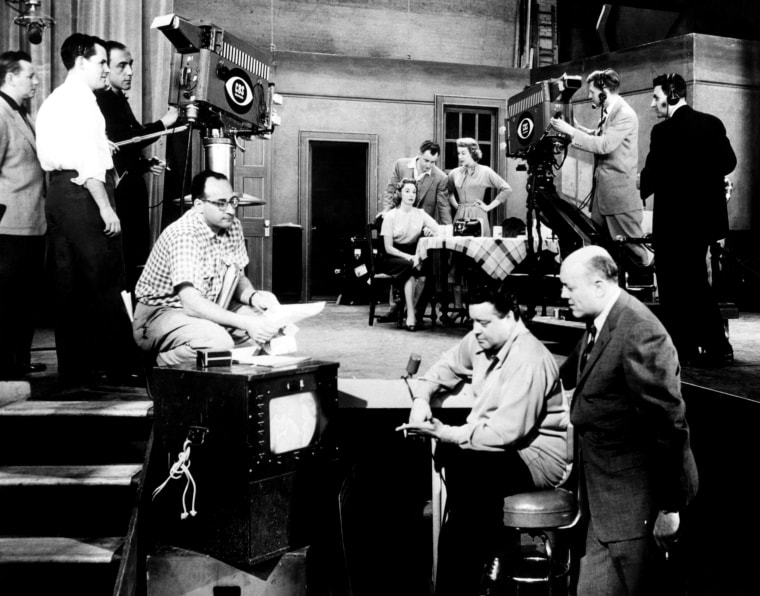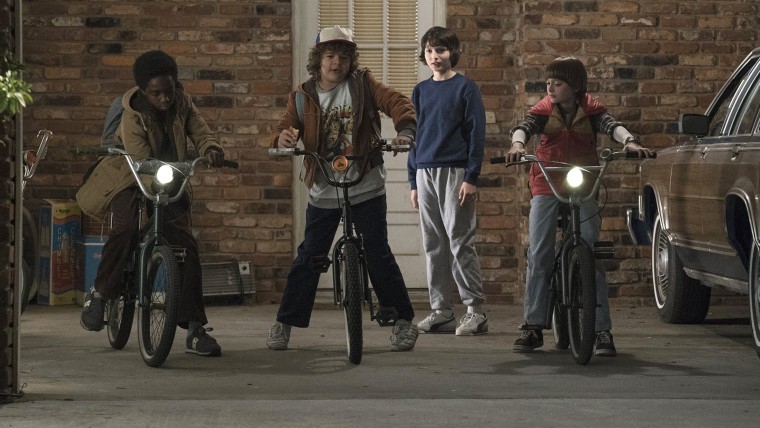Tales detailing the plight of America's disillusioned middle class and the realities of life in the rural United States are making their way to a TV near you.
Sitcom writers are now grappling with how to best reflect the slice of the electorate that voted for Donald Trump, and delve into the deep cultural and political divides exposed during the 2016 presidential race, according to television and film experts.
The television industry will likely start developing new shows based on this political reality later in the year or early next year, said Eric Deggans, an award-winning author and television critic with NPR.

“Trump's electoral victory and the further polarization it has inspired has just begun to filter into the TV industry," he said.
Despite a long history as a medium through which authentic life is portrayed, many of today’s television shows don’t reflect the reality experienced by millions of Americans — particularly the economic one, experts say.
A 2015 Pew Research Center report found that "middle-income Americans have fallen further behind financially in the new century."
But, as the financial prospects of middle-class Americans have declined, so have the number of narratives that reflect their lives, according to television critics.
"We certainly have enough of everybody’s rich."
“There are a disproportionately few numbers of stories about … people as they actually live in the United States,” Robert Thompson, Bleier Center for Television & Popular Culture director, told NBC News.
Even when shown, the concept of a monolithic suburban or rural working class is often mythologized on the small screen, television critics say.
“As much as a kind of idealized version of working-class middle America is at this imaginary center of our national culture, it’s kind of always been a constructed fiction,” said Michael Kackman, a professor of film, television and theater at the University of Notre Dame.
For example, at the dawn of the TV era, the lives of relatable American families dominated the networks in shows such as "The Honeymooners," "The Andy Griffith Show" and "The Waltons."

The 1980s brought more multifaceted working-class focused shows such as "Roseanne" and "Married with Children," but also sitcoms such as "Growing Pains" and "The Cosby Show," which featured upper-middle-class families.
And the 1990s saw the creation of shows about young people and their lives in the city, such as "Seinfeld" and "Friends." Though Thompson notes that some of the characters in "Friends" technically had working-class jobs, money was never realistically addressed — for instance, how could they really afford a Greenwich Village apartment?
Experts say that in the modern era of television, reality programming has filled the gap by featuring rural families in such shows as "Duck Dynasty," "Here Comes Honey Boo Boo" and the "Deadliest Catch." It is very easy, they add, for networks to rely on scripted shows with a crime or medical focus, or shows with characters who are in the 1 percent, such as "Keeping Up With The Kardashians."
The industry "is not designed with the mandate to show the world as it is. It’s designed to tell stories,” Thompson said.
Still, there are some shows that try to tackle working- and middle-class themes or incorporate more rural settings, such as "The Middle," "The Goldbergs" and "Fresh Off The Boat." Netflix's big hit, "Stranger Things," was set in a small Indiana town.

The creators of "The Middle," Eileen Heisler and DeAnn Heline, conceived of the family comedy as a way to represent American middle-class life, similar to their Midwestern childhoods — something that they didn’t feel existed on TV at the time.
The show's Heck family lives paycheck to paycheck. The father works in a quarry in Indiana and they were relieved when they were classified as "poor" enough to qualify for financial aid.
In crafting the plots, the creators said they wanted to simply write the show from the perspective of the family’s everyday struggles.
“The things that rural working class voters are going through, people of color are getting doubly”
“The thing that we get the most is 'Oh my God, you have a camera in my family room' [and] 'You have a camera in my kitchen, because my washing machine just broke and I can’t afford new wallpaper either,'" Heline said. "I think that’s a relief to a lot of people to see themselves portrayed on TV."
"We certainly have enough of everybody’s rich … that can be fun to see but it’s not representative of a lot of people,” she added.
But as writers and show creators mull new plots, television experts caution that the post-election discussion does not have to be solely about disillusioned white working-class voters.
Minorities also make up a significant percentage of those hurt by the decline of the middle class with the gap between white and black families' incomes at its highest level since 1989, according to a 2014 report from Pew.
Related: United States of Trump
“The things that rural working class voters are going through, people of color are getting doubly,” Darnell Hunt, director of UCLA's Ralph J. Bunche Center for African American Studies, told NBC News. “The industry is going to have to deal with diversity."
"This is exactly the wrong time to be … taking steps back on diversity," he said.
This also applies to how Americans are faring under a Trump presidency, said Deggans, the NPR critic.
“The real question is whether TV outlets will begin creating shows which mirror the perspective and policies on subjects like immigration, terrorism and transgender rights that we've seen articulated by President Trump and his supporters,” Deggans said. “I haven't yet seen any evidence that Hollywood producers are rushing to make that happen yet."